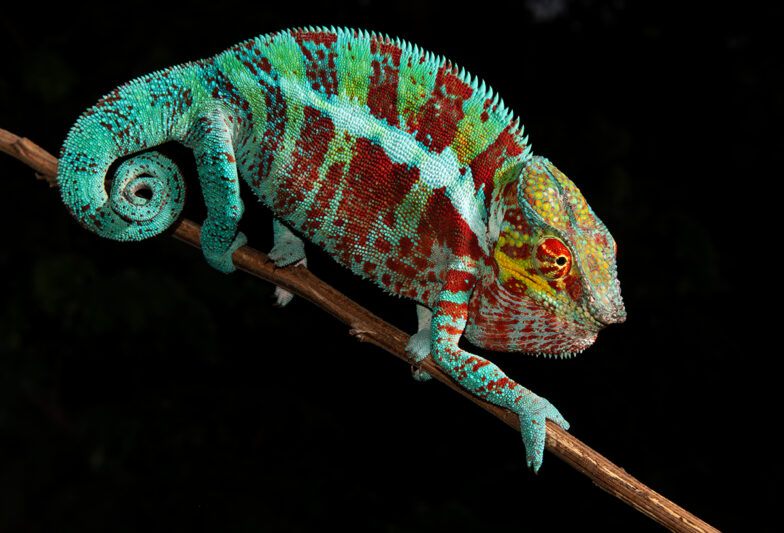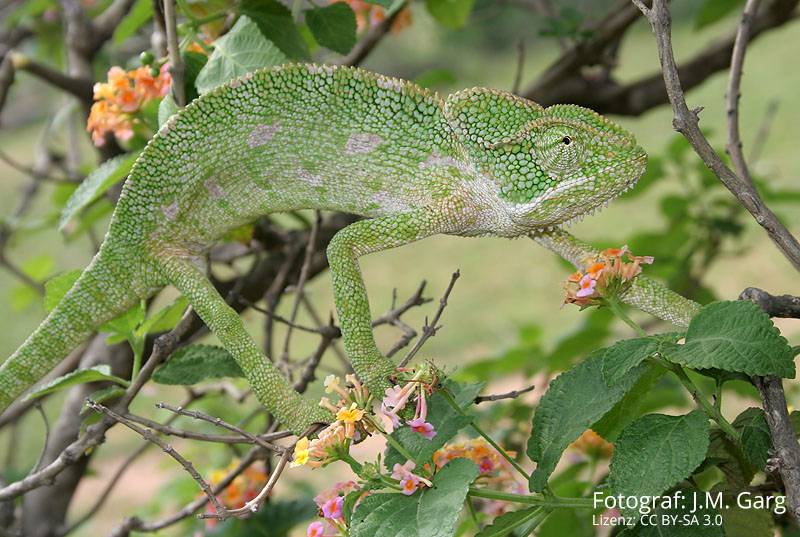In the bi-monthly magazine of the DGHT e.V., the Elaphe, a nice article on the panther chameleons of Madagascar has been published. It was written by two members of the AG Chamäleons who regularly travel to the island.
The article describes in words and pictures the distribution area of the panther chameleons on Madagascar, which extends over the northern half of the island, more precisely from a few kilometres south of the village of Ankaramibe in the northwest to the north of Madagascar and down the east coast to about 90 km south of the port city of Toamasina. The chameleons are found mainly in secondary vegetation in open landscapes, but also in cocoa plantations, overgrown gardens and rainforests.
The life cycle of the panther chameleons in Madagascar is mainly determined by the rainy season between November and March. The chameleons mate during this time. After 30 to 40 days, the females lay between 11 and 35 eggs in a nest they have dug themselves. The young hatch only in the next rainy season.
The article goes into particular detail about the different local forms, the different colour appearance of the male panther chameleons depending on the location. The authors currently count more than 30 different local forms on Madagascar, which are separated from each other by natural barriers such as rivers. There are probably many more, but not all of them have been discovered yet.
Pantherchamäleons (Furcifer pardalis) – Meister der Farben
Thorsten Negro and Alexandra Laube
Elaphe 3, 2023, pp. 12-25
Photo: Panther chameleon of the local form Ambanja on Madagascar, photographed by Thorsten Negro.



